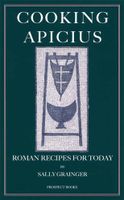Advertisement
Asafoetida
Ferula Assa-Foetida
Published 2006
This spice is obtained from the resin leached from a umbelliferous plant native to Iran and Afghanistan. In Roman cookery the resin was called laser and the plant was called silphium, though this was originally a separate and distinct plant native to north Africa which became extinct around AD 50 after which the resin from Parthia (Iran) replaced it. It has a distinct and pungent aroma reminiscent of fermented garlic, and is very common in Indian food. It is in Indian supermarkets that you will find it today. It comes as a yellow powder, sometimes under the name ‘heng’, and needs to be used with care. Its effect is considerable. Sometimes the true resin can be bought from Indian suppliers and it is recommended that you try to find this if you can, though the powdered form is perfectly adequate and was in fact the most common form of the spice in the ancient world. If you are able to acquire a piece of resin do as the Apicius cookery book recommends at 1.13 and place it in a glass vessel or jar with 20 pine kernels. The flavour and aroma will transfer to the kernels which you use instead of the resin – replacing them with a new supply. You will have to experiment over time to gauge the strength of flavour of the kernels and adjust the recipes. The use of asafoetida is very much a personal one, like the heat of chilli; you need to know your limitations and that of your guests!


